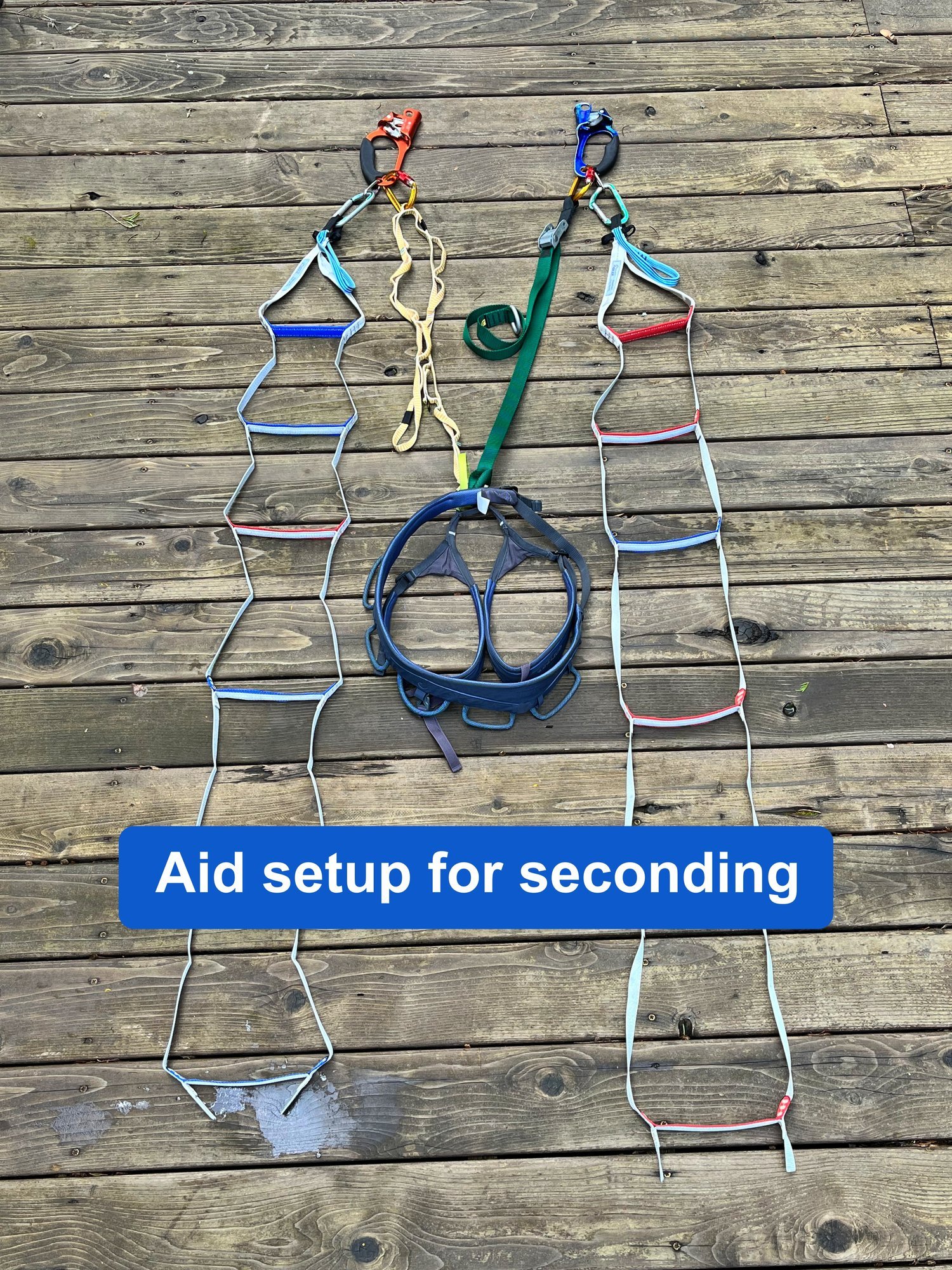Stirrups for rope ascending
Premium Members can read the entire article here:
Back in the day, I saw a superb slideshow by big wall legend Hans Florine, holder of multiple speed records on El Capitan, about his vertical adventures. One was a video clip of him jumaring up a fixed rope at a ridiculous speed. It looked like he was jogging up a flight of stairs!
What was he standing in? Nothing more than a DIY stirrup of 1 inch webbing, with an overhand knot tied in each end. Clip one end to your ascender, make a sort of girth hitch out of the other end and cinch it down on your foot. Cheap, simple, efficient!
I may cover that DIY hack in a future article, but today, let’s look at a more refined tool that’s a lot more comfortable and adjustable - stirrups.
The ones I like: these sweet custom stirrups from Skot's Wall Gear.
Skot Richards is a big wall expert and one-man operation who sews everything himself from his shop in California. I like supporting his small business, innovative gear, and commitment to “Made in USA”, and I hope you do too.
(Skot was kind enough to send me these stirrups for review. In the rare cases I’m offered gear for a review like this, I’ll always tell you about it upfront. I only tell you about gear that I think is great, and never because I might get it for free.)
Almost ready to jug this rope.
(Not shown for clarity: two tethers connecting my harness and each ascender, see photo below. Those are important!)
Big wall ascending overview . . .
In big wall climbing, the rope is typically fixed by the leader and then ascended by the second, who cleans the gear.
There are three main components to a standard ascending system for big walls:
Two handled ascenders on the rope
Two tethers of some flavor, each attached an ascender with a locking carabiner
Two of something for you to stand in, which traditionally is your aid ladders
Here's a photo of the typical set up.
However, using your “leading” ladders for rope ascending has a few problems.
Main problem, your foot wants to wriggle out of the ladder every time you step up. Some ladders have a bit of elastic sewn underneath one of the bottom steps to try to deal with this, but that’s a bit of a bother. (Yes, once you get skilled at ascending, it’s easier to keep your foot in the ladder step, but it still is a bit of a balancing act.)
Especially on skinnier ladders with narrow steps, it's not so comfortable for your foot.
You can't fine-tune the height of the step for optimum efficiency.
The unused steps are flapping around below you, occasionally snagging on things and generally in the way.
The ladders are often heavier than necessary. This is especially true with some of the more robust, older style ladders. It may not seem like a lot of weight, but every time you slide that ascender up, you’re lifting the weight of the ladder. Multiplied by 3,000 times to get to the top of El Capitan, and that's a lot of weight.
A more modern way to ascend a rope: replace your aid ladders with a pair of dedicated foot loops, a.k.a. stirrup.
Stirrups solve all of the above issues:
They have a strap to lock your foot in place
The bottom of the stirrup has wider webbing, so it's more comfortable
They are easily adjustable, so you can fine tune the length
Nothing dangles down below your foot
They are lighter than your ladders
Bonus: relatively inexpensive, about $30 each.
Why does one stirrup need to be longer than the other?
What do you do with your lead ladders when you’re cleaning?
How do you dial in the all-important distance of the tether to your ascender?






